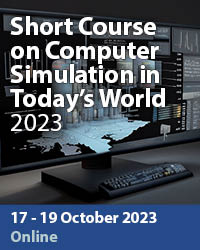Operation Simulation Of Traction Systems
Price
Free (open access)
Transaction
Volume
103
Pages
10
Page Range
283 - 292
Published
2008
Size
655 kb
Paper DOI
10.2495/CR080291
Copyright
WIT Press
Author(s)
L. Abrahamsson & L. S¨oder
Abstract
The objective of this paper is initially to present a basic modeling of the railway traction system. This model includes the basic technologies used today. The voltage dependencies of the maximal possible power consumption as well as the maximal velocity of the common Rc-locomotives are included. The latter is very crucial for the studies of time table sensitivity, which is of our immediate interest. Moreover, a method is presented that estimates the expected train delay time for a given feeding technology. The reference timetable assumes the same train and surrounding conditions, but no voltage drops. In the numerical example where the developed model is applied to a realistic test system, a set of possible amounts of railway traffic are treated as uncertainties. Mainly, the contributions of this paper are three: compiling and connecting already accepted models, the development of a method for numerical calculations using this model compilation, and an example to apply this model on. Keywords: railway, traction system, simulation, uncertainty. 1 Introduction During the last decade, the railway has in many countries has experienced a renaissance after several decades of decay, cut downs, and a lack of newinvestments. The main reasons for the expansion of the railways are: environmental and economical, as well as related to safety issues. This in turn has increased the interest in the development of models of the railway net. When making a decision about the future costs, possible under investments or over investments need to be estimated in an appropriate manner. In a railway system, a voltage drop causes the trains to run slower, while in the ordinary power system some consumers occasionally have to be disconnected. Furthermore,
Keywords
railway, traction system, simulation, uncertainty.





